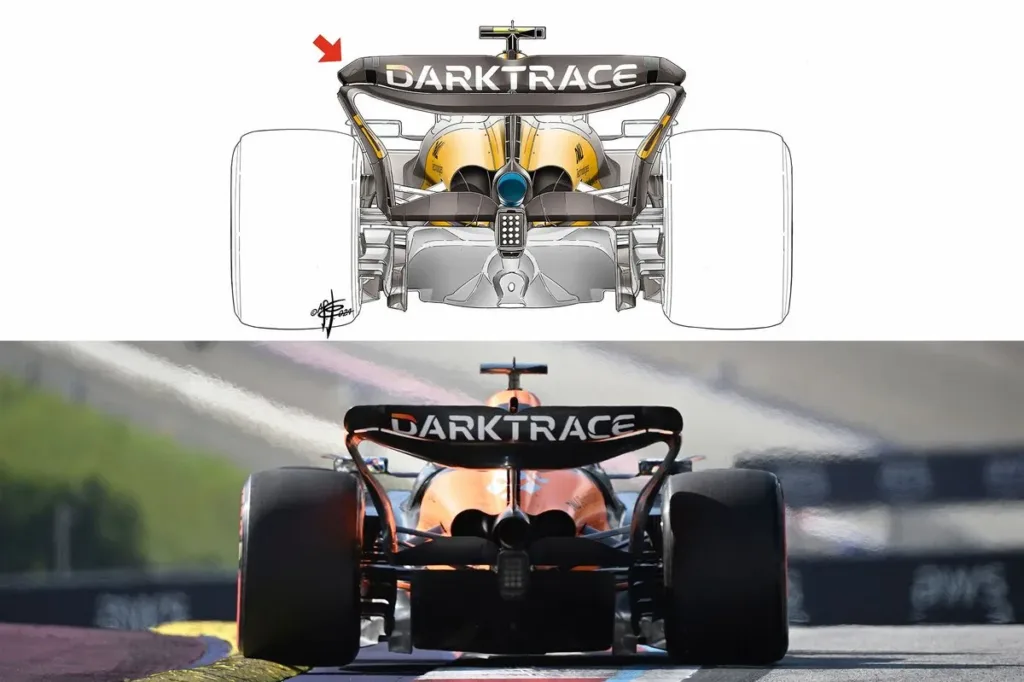Dakar Rally News: McLaren Aims for Top Speed Boost with New Rear Wing Assembly at British GP
In a bid to gain an edge over their rivals, the McLaren Formula 1 team arrived at the British Grand Prix with a new, lower downforce rear wing assembly for their MCL38 car. The goal was to boost the car’s top speed performance on the high-speed Silverstone circuit.
Alongside the new rear wing, the team also had three different beam wing specifications available, allowing them to find the right balance between downforce and drag reduction to suit the track conditions.
The new rear wing design maintains the core DNA of McLaren’s other downforce options, but with a mainplane and top flap that take up less of the available regulatory box space. The central portion of the wing is flatter for longer and features a less aggressive taper towards the endplates, which also have a larger corner radius.
“To match the mainplane’s trailing edge, the upper flap’s geometry is less twisted across its span and incorporates a half-moon notch in the center of the trailing edge, rather than the V-shaped alternative seen on other rear wing solutions. The outermost trailing edge section has also been trimmed, altering the tip vortex behavior.”
In addition to the rear wing changes, McLaren trialed a different rear engine cover and cooling arrangement at Silverstone, with a flared opening used to help reject heat. However, the team opted to bench this solution for the remainder of the weekend, likely to feature in upcoming races when extra cooling capacity is needed.
Mercedes, another team on an upward trajectory, also brought trimmed front and rear wings to cater for the high-speed demands of the Silverstone circuit. The team’s focus was on adjusting the front and rear brake ducts to improve aerodynamic efficiency, as less cooling was required due to the circuit’s high-speed nature.
Aston Martin, meanwhile, continued to refine the heavily revised front wing design it debuted at the Emilia Romagna Grand Prix, making changes to the central section of the mainplane and increasing the twist across the upper flap’s span to better manage downforce production and airflow.
As the Dakar Rally season intensifies, these developments from the Formula 1 teams showcase the ongoing pursuit of performance gains through innovative aerodynamic solutions. Fans of the sport can expect to see these teams pushing the boundaries of car design in the races to come.
🔗 Source
